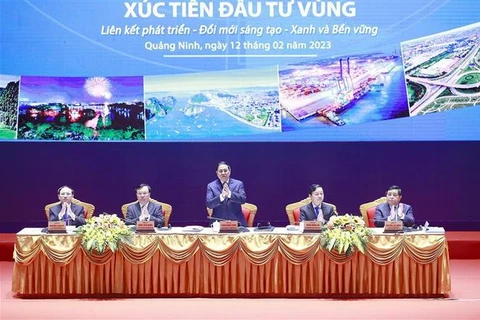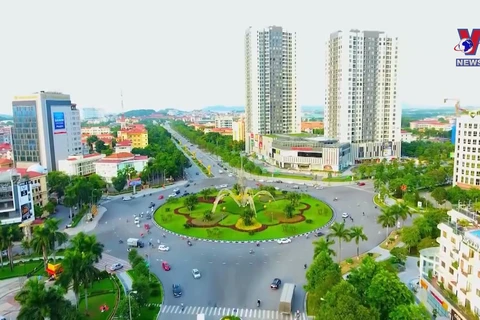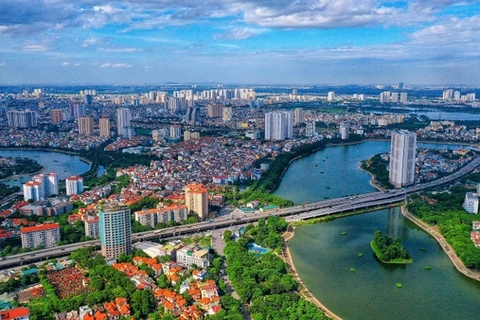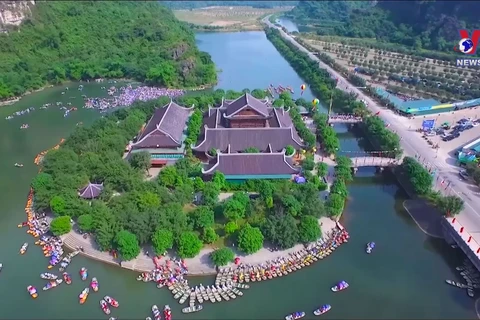 Inspectors examine a container at Cai Lan port in Quang Ninh province. More ports need to be built to promote inter-regional ties. (Photo: VNA)
Inspectors examine a container at Cai Lan port in Quang Ninh province. More ports need to be built to promote inter-regional ties. (Photo: VNA) The minister made the remarks at a seminar "Promoting investment, trade, and services to strengthen inter-regional ties" held on March 30 in Thai Binh province.
He said in more than 15 years, the region saw a remarkable economic advancement with an average annual growth rate of 8.93%, far higher than the country's level.
In 2022, its GDP hit 2.89 quadrillion VND (123 billion USD), contributing to nearly one-third of the national GDP. Its income per capita was 1.3 times as high as the national average, at 123.4 million VND per annum.
Despite the impressive economic growth, the region still faces some major obstacles.
First, its transition to a service-based economy is moving slowly. Second, its fiscal revenues are over-dependent on land sales.
Third, there is a considerable time lag between planning and implementing. Fourth, economic development is uneven among sub-regional localities, and, more importantly, their economic ties remain weak.
The ministry called for more drastic measures to overcome the obstacles and unlock the region's full potential. The measures could include infrastructure development, investment promotion, and tie strengthening.
Additionally, he urged the region to quickly approve 'The regional masterplan for the period of 2021 to 2030, with a vision to 2050' to lay the groundwork for regional development.
He also called for a green-oriented, high-tech manufacturing hub in the region to reduce greenhouse gas emissions and secure a higher position in the global supply chain. Priority would be given to the production of semiconductors, chips, renewable energy, and new materials.
He said the region should capitalise on free trade agreements to expand its commercial footprint and diversity its market reach. It should also promote tourism to make the industry a money spinner for the region.
Deputy Minister of Industry and Trade Do Thang Hai described the region as a national economic powerhouse with three engines, namely Hanoi, Hai Phong, and Quang Ninh.
He said the regional infrastructure had been growing rapidly in recent years with the proliferation of shopping malls and commercial centres, significantly improving the local economic landscape. However, inter-regional projects still rely too much on the central government's funds.
He called for measures to attract different types of funds to pick up the slack. With those funds, more logistics hubs, transit centres, seaports, and airports can be built to promote inter-regional economic ties.
Vice Chairman of the Party Central Committee's Economic Commission Le Hong Son said the global situation is changing, which could be a bane or a boon for the region. This depends on the mindset of the regional authorities and other stakeholders./.
VNA























